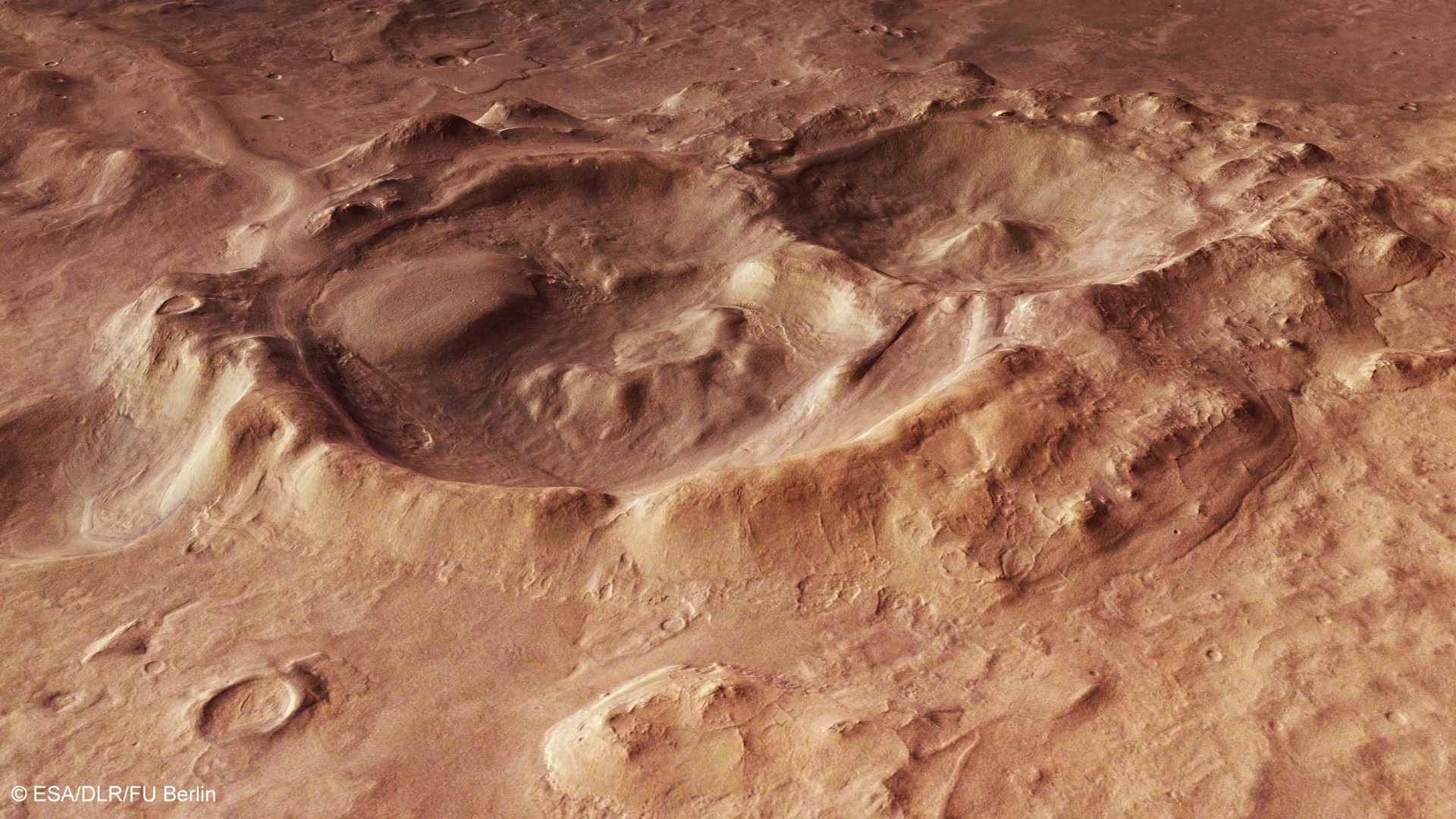Did that impact 4.1 billion years ago ever leave a scar! Here, a Mars Express photo from late 2013 (and just highlighted now) shows off craters in Hellas Basin, which was formed when the planets in our young Solar System were under intense bombardment from leftover remnants.
But over time, wind and erosion on Mars have changed the nature of this basin, the German Space Agency explained.
“Over time, the interior of Hellas Planitia has been greatly altered by geological processes,” the German Space Agency stated.
“The wind has blown dust into the basin, glaciers and streams have transported and deposited sediment, and volcanoes have built up layers of low-viscosity lava on the floor of Hellas. Despite its exposure to erosion and coverage by deposits for a long period of time, it is the best-preserved large impact basin on Mars.”
What’s more, Hellas is so deep (four kilometers or 2.5 miles) that scientists suspect water could be stable near the bottom of the pit. That’s because the combination of pressure and temperature there could possibly support water for some time, which is different from much of the rest of Mars where the pressure is too thin for water to do much but evaporate.
Source: German Space Agency


Yes. The atmospheric pressure and the temperature is very very close to what is called the “Triple Point” of water. This point is where a substance’s boiling and freezing point are the same temperature. At Hellas basin’s lowest points, water could be found as a solid (ice), a gas vapor or as a liquid. The bottom line is that if any liquid water is released from underground to the surface, it will hang around in liquid form longer than anywhere else on the planet.
Check my pervious posts? Hellas Planetia should be the number one choice for the next series of lander(s). Think geothermal hot springs in one or more of the deep cracks. Then, finding lava tubes in the area to build habitat(s) would be a major bonus.
Awesome! I was thinking it might be a difficult landing though. Not that Mars is easy anywhere else.
The description of this image at dlr.de notes “the oblique perspective view (image 2) was calculated from data acquired by the HRSC stereo channels”. So this might not exactly be a “photo”. Often the vertical scale of these computer generated images is exaggerated for clarity, or because it looks more exciting.